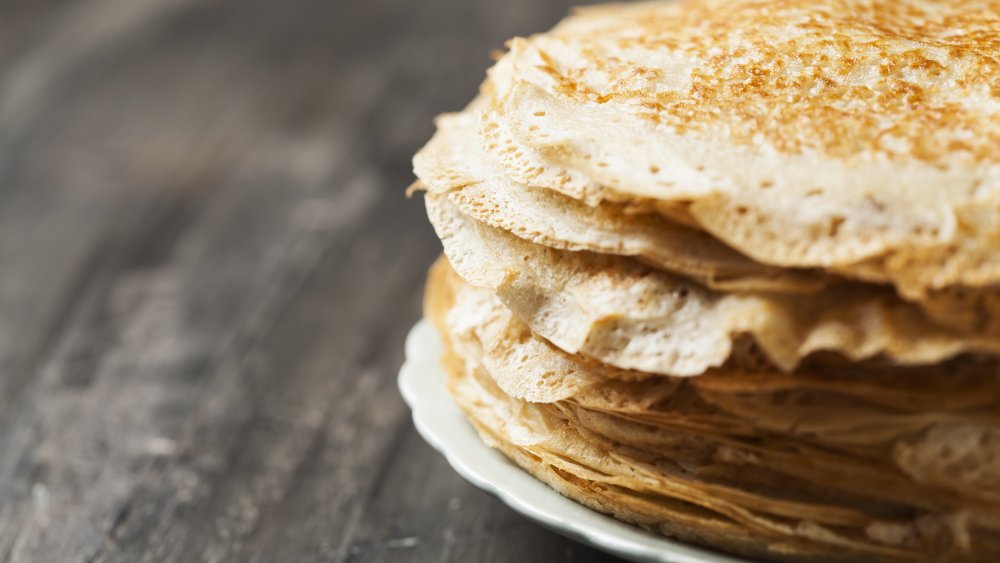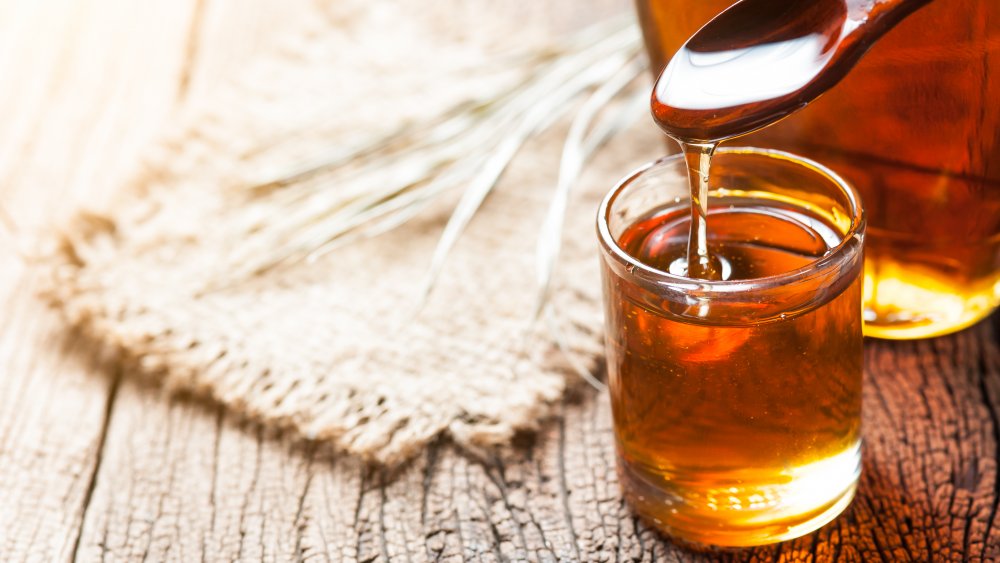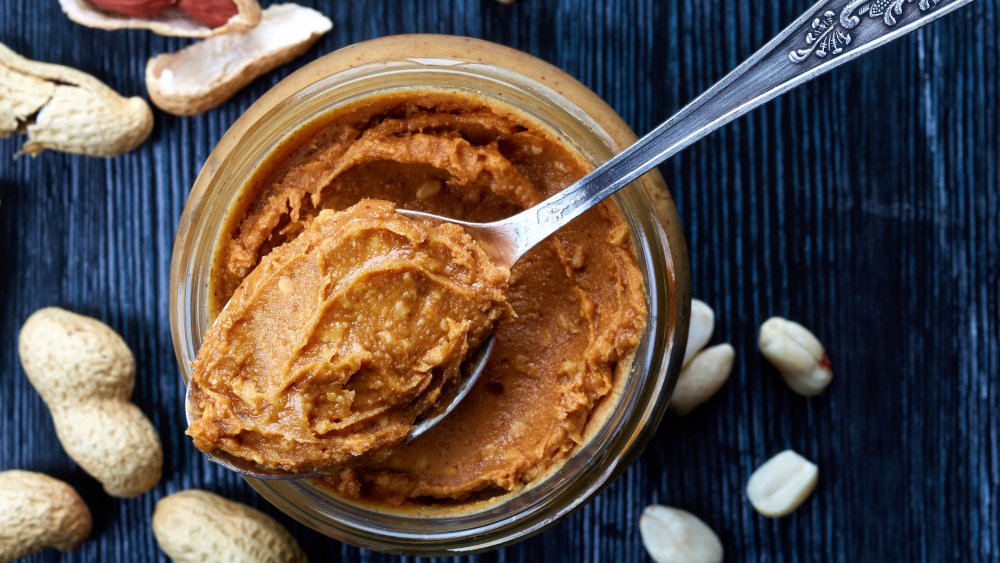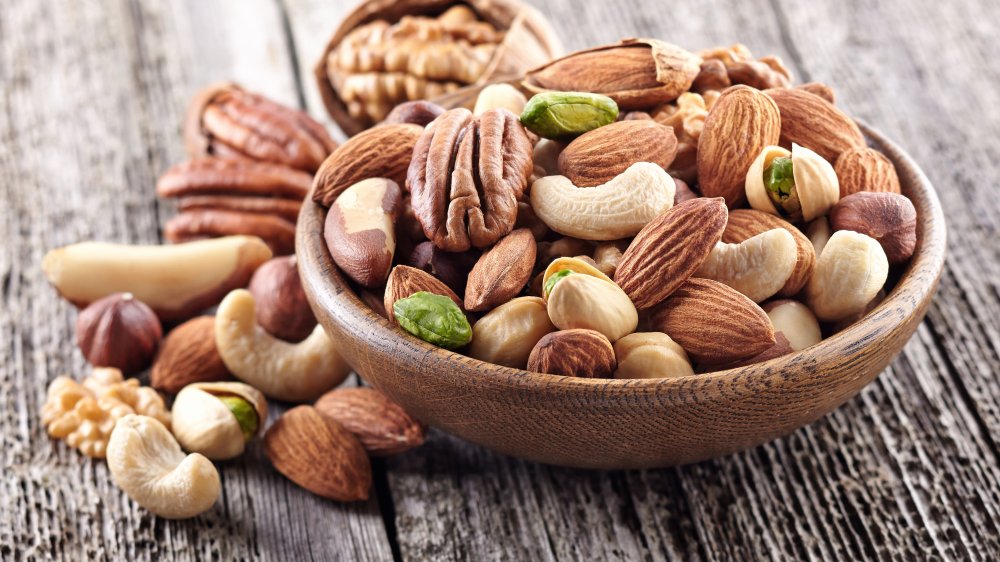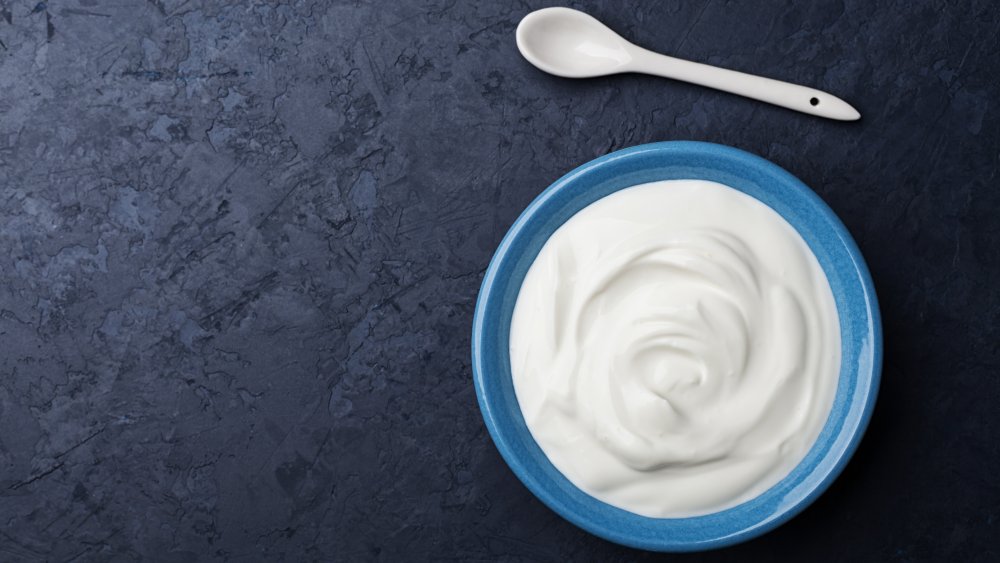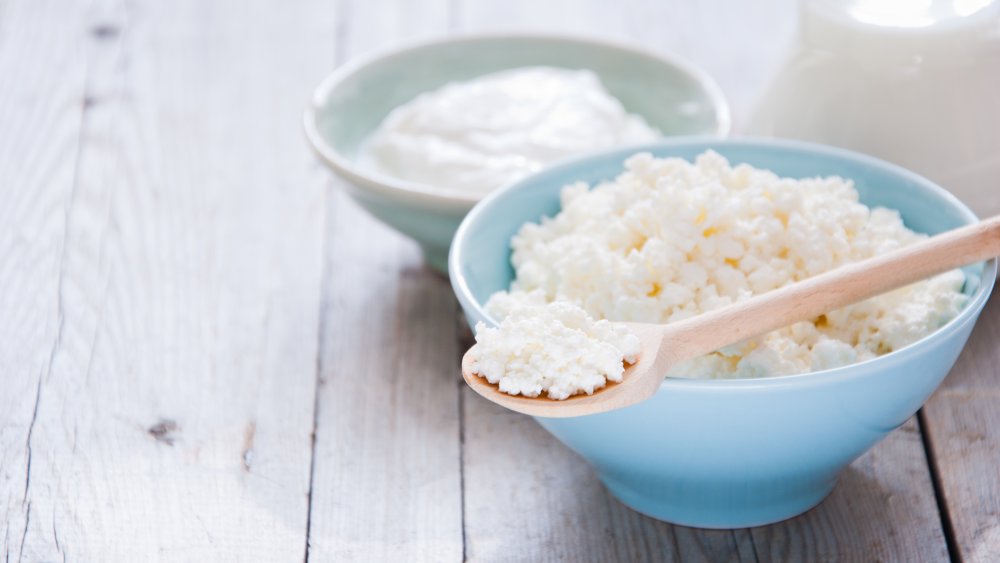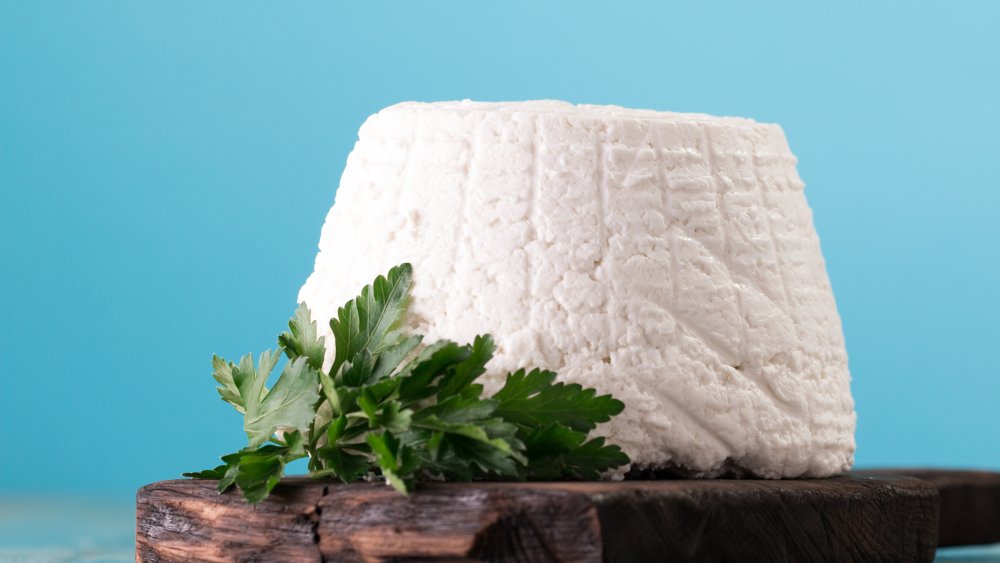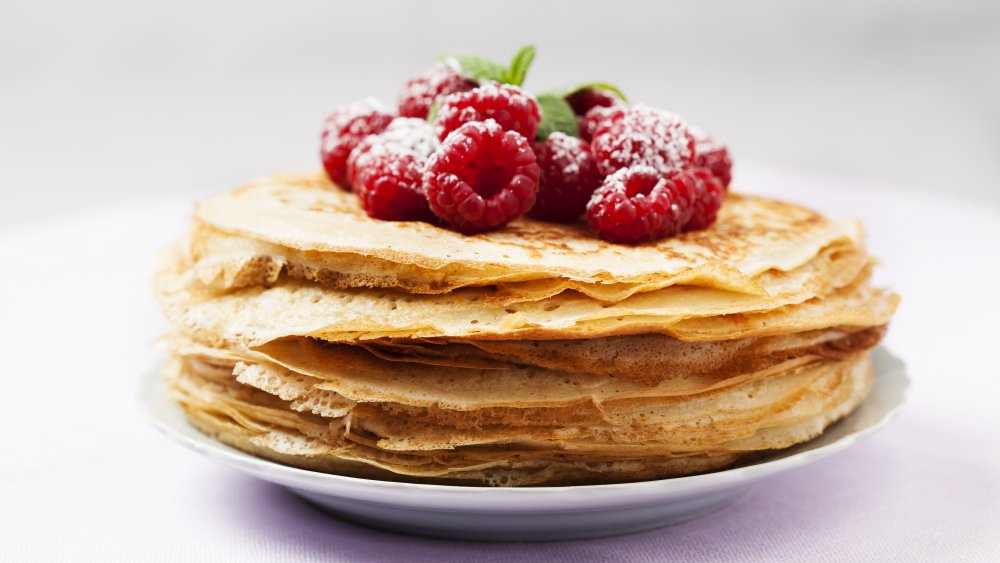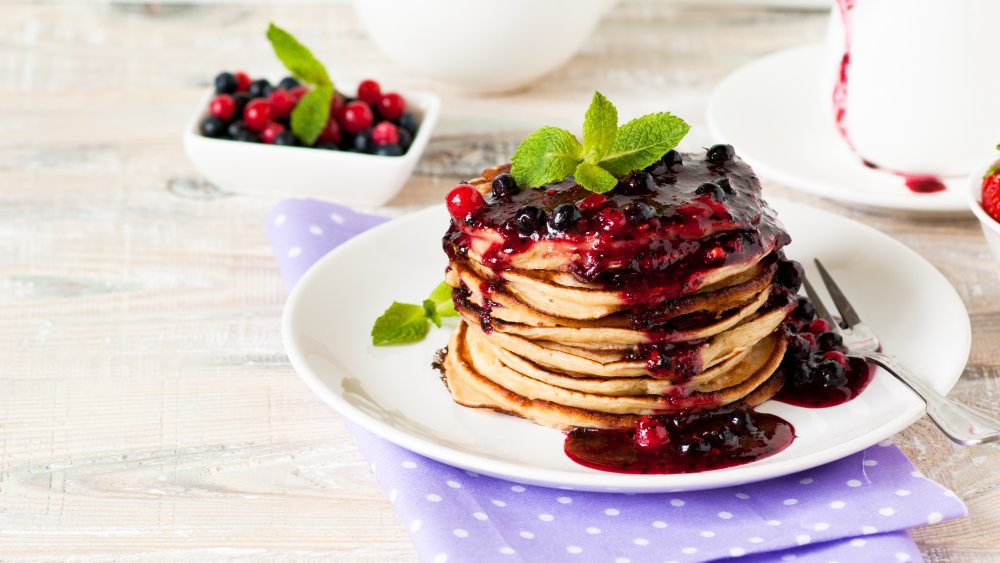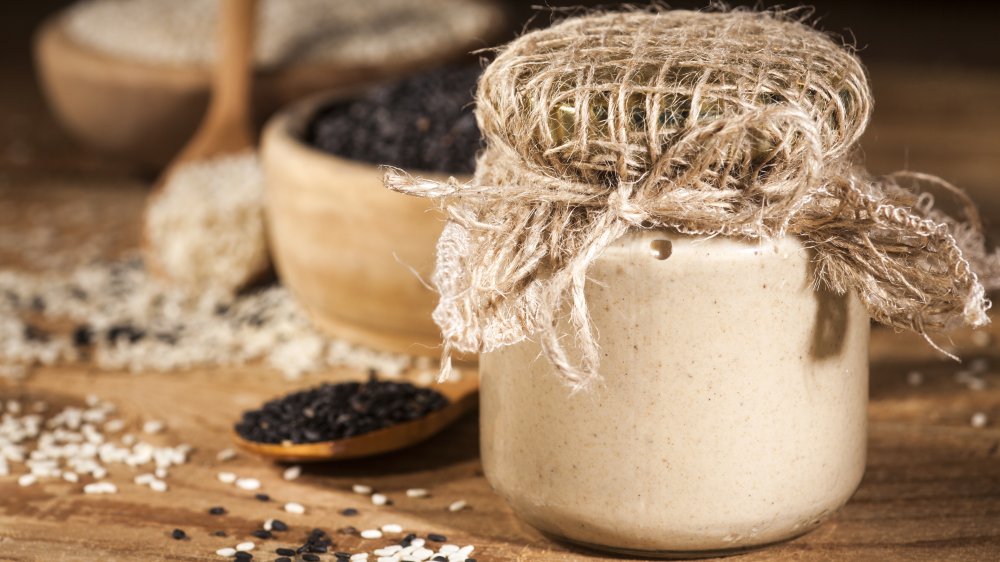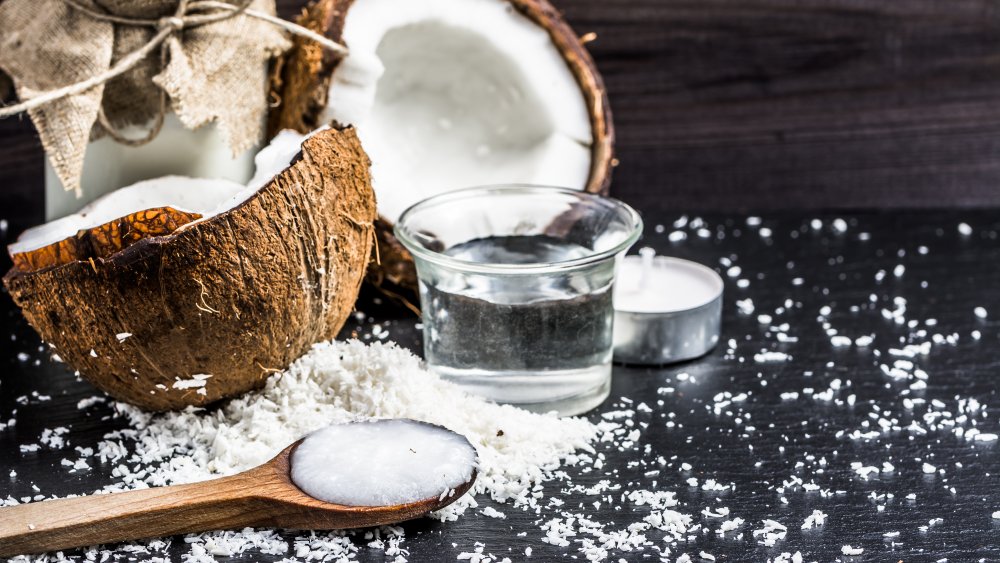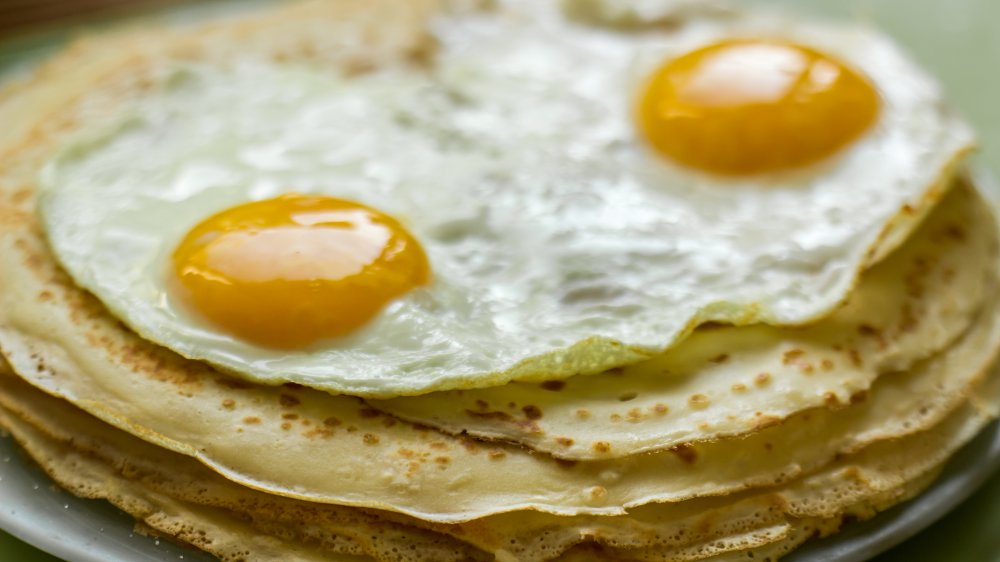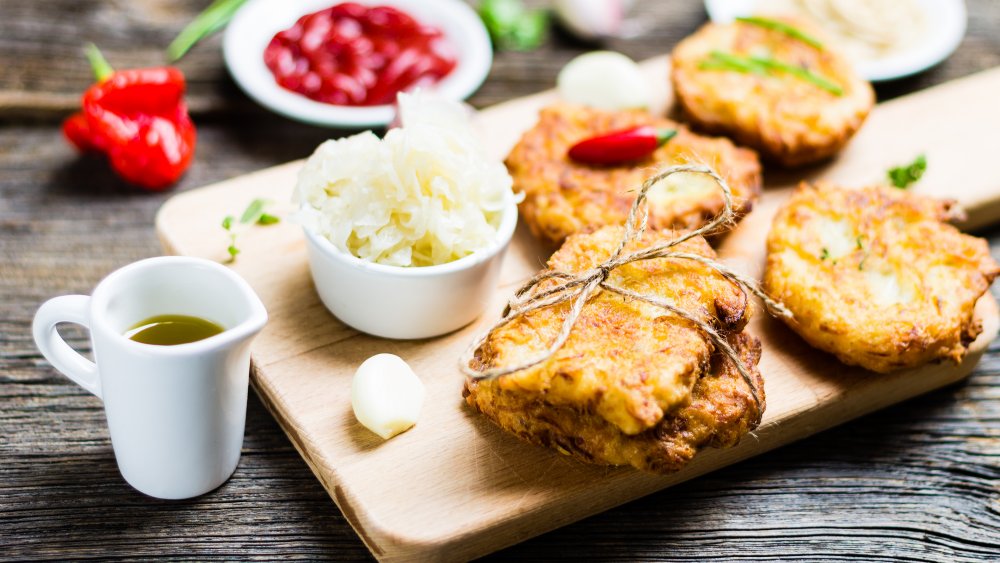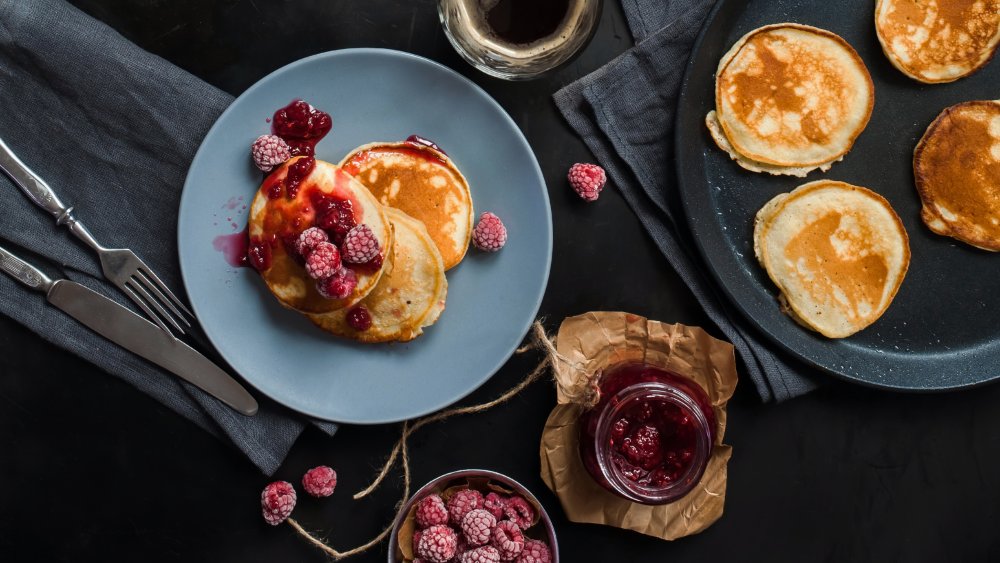Pancake Toppings That Are Better Than Syrup
We may receive a commission on purchases made from links.
In my work as a registered dietitian, I joke with my clients that I'm a stickler about breakfast. Whether you're chomping on an apple as you walk to the subway, sitting down to a veggie omelet, or enjoying a made-ahead overnight oats parfait at your desk, that morning meal sets the tone for the rest of your day.
Pancakes are a weekend ritual lots of people love. There's a time and place for indulging in a classic you love, but I always encourage playing around in the kitchen and trying new stuff. I know there are a ton of healthy pancake recipes in the internet (sweet potato-and-egg blender pancakes are my personal fave) but what you put on top of those cakes counts too! Today I've got some healthy syrup alternatives that deliver on flavor and bump up the nutrient value.
Why you should think beyond maple syrup
A quarter-cup serving of maple syrup (that's equivalent to four tablespoons) tacks on 200 calories to your meal — and it's all from sugar. Say you had regular white flour pancakes, with syrup. Your body recognizes that as carbs on carbs, and the blood sugar and insulin spike you experience as your system goes to work processing those carbs can leave you feeling cranky, sleepy, and weirdly hungry a short time after.
There's a lot of other stuff you could enjoy for those 200 calories! Here are some ideas to get you started, but feel free to get weird with it — you never know what awesomeness you might discover.
Peanut butter
I know, I know, another dietitian/food blogger nerding-out on peanut butter, but it's a healthy living cliché for a reason! The protein and the heart-healthy monounsaturated fat in the peanut butter helps buffer the breakdown of the carbohydrates in the pancakes so that you get a slower, more stable energy burn after your meal.
Each tablespoon provides about four grams of protein, and eight grams of filling fat for about 100 calories. Go for an a natural variety that contains only peanuts and maybe salt. This will save you some sugar and help support more stable blood sugar. If you want to make your own at home, this recipe from dietitian Kelli Shallal of Hungry Hobby also contains ground flax, which adds extra fiber and healthy omega-3 fatty acids. If preferred, swap in almond butter, sunflower seed butter, or any other nut or seed butter you like. Dietitian Ashley Munro of A Pinch of Grace has a delicious recipe for cashew butter you can easily whip up at home.
Nuts
Adding two tablespoons of nuts is a great way to add rich flavor and a nice boost of protein and fiber, along with those heart-healthy fats. Depending on the specific type of nut you choose you'll add about 100 calories, around four grams of protein, about two grams of fiber, and around eight grams of mono- and polyunsaturated fatty acids.
A few delicious options are walnuts, almonds, and pistachios. For those with nut allergies, try sunflower or pumpkin seeds, which boast a similar nutrient profile to nuts. You could also sprinkle on some chia seeds, hemp hearts, or ground flax.
Greek yogurt
Plain Greek yogurt is a versatile pancake topper that can be adapted to all kinds of flavor profiles. It also provides filling protein — a quarter-cup will provide about five grams and only about 30 to 50 calories, depending on the fat level you choose. I usually recommend low-fat or full-fat over fat-free yogurt to help your body absorb the fat-soluble nutrients in your meal (vitamin D, for example) and to keep you satisfied, longer.
If you need a little flavor boost, try mixing in cinnamon, or a teaspoon of honey, syrup, or jam. It also makes a great base for fruit. If you're up for an experiment, use it as the base for a creamy sauce.
Cottage cheese
We often forget about it, but cottage cheese is packed with protein. A quarter-cup provides eight grams right there! What's also great about cottage cheese is that it can easily be combined with other flavors. Since many varieties are super-salty, go for a no-salt-added version if you're looking for a more neutral taste.
Dietitian Lauren Harris-Pincus, author of The Protein-Packed Breakfast Club says, "Cottage cheese sprinkled with some pumpkin pie spice works really well as a topping...For those who have an issue with the texture of cottage cheese, blend it up in a mini food processor and you are left with creamy, protein-packed goodness."
Ricotta
Ricotta is king when it comes to tasting fancy while actually being really simple. It has a similar protein content to cottage cheese (you'll get six to eight grams in a quarter-cup serving) but with a smooth texture and a mild flavor that makes a great blank canvas. In this Indian dessert-inspired recipe, dietitian Roxana Begum, of The Delicious Crescent, garnishes cardamom-scented carrot pancakes with sweet ricotta cream.
This recipe from dietitian Mandy Enright, creator of Nutrition Nuptials, pairs ricotta and peanut butter, saying, "Ricotta has a natural sweetness, and the peanut butter powder adds an additional savory flavor element." She also loves this combo because it "adds protein to an otherwise carb-heavy breakfast and is a great way to fill up first thing in the day."
Fresh fruit
Fruit on pancakes is kind of a no-brainer. Aside from being pretty, fruit adds fiber and key vitamins and minerals to fuel your body for the day ahead. Berries will give you a lot of nutritional bang for your buck when you consider all the powerful antioxidants in there, plus the higher fiber content, when compared to other fruits like bananas. But don't be afraid to experiment with what's in season!
Just keep in mind that portions count. While fruit has lots of great stuff going for it, it's also a concentrated source of carbohydrates (mostly in the form of fructose) so can still cause a blood sugar spike if you don't balance it out with some protein or fat to slow digestion. Go for fruit, but stick to a quarter or half-cup serving, and make sure you work some protein in there.
Cooked fruit
As fruit cooks, the sugars caramelize and lend a rich, sweet flavor that rivals any bottled syrup. You'll also get some of the benefits from the fresh fruit, like fiber, vitamins, minerals, and other nutrients. A few delicious suggestions: sauteed banana, roasted apples, stewed plums, and roasted strawberries. Try sautéed apples, like in this delish pancake recipe from registered dietitian Julie Harrington, of RDelicious Kitchen.
You can also experiment with making your own compote or jam. This strawberry chia jam recipe from dietitian Kate Lee, of Home Cooked Happy, only requires four ingredients. For a simple blueberry sauce, try this easy recipe from dietitian Jennifer Hunt of Healthy Inspiration.
Tahini
If you haven't tried this ground sesame paste, you're in for delicious, nourishing treat. You'll get healthy fat and some protein (one 100-calorie tablespoon has about eight grams of fat and four grams of protein) to keep you satisfied.
The rich, warm flavor is the perfect complement to other toppings as well, such as nuts, seeds, or fruit. Tahini also makes a great base for a sauce. You'll love this date caramel sauce from dietitian and blogger Abbey Sharp of Abbey's Kitchen.
Coconut oil
Want just a hint of flavor and a rich texture? Try coconut oil instead of the traditional butter. Solid at room temperature, like butter, it melts into deliciousness and provides a mellow but luxurious flavor that hints at coconut without competing with other flavors.
Like butter, it's not a low-calorie food — one tablespoon clocks in at around 120 cals), but the fat will keep you full for a long time. It's a great option for those on a dairy-free diet.
Eggs
If you've never tried a poached or sunny side up egg on top of your short stack you're in for a real treat. The velvety yolk creates a luscious sauce of its own, and you also get a boost of protein and fat to keep you energized for hours. A large egg, for all of its 70 calories, boasts five grams of fat and about six grams of protein. Serious brain food. Just a note, this pairs best with savory pancake recipes.
Savory stuff
Savory pancakes sound too weird? Try reframing it in your mind as something more akin to crepes or socca (chickpea flour pancakes). This would also be a good option if you make potato pancakes, or something like cauliflower rice or zucchini-based pancakes (totally a thing). Pile on any leftover cooked veggies you have, or try garnishing with tomato sauce and a sprinkle of your favorite cheese.
Choose your own pancake adventure
When it comes to pancakes, there's a whole world of wonderful and weird variations to try. How about trying a different one each time, or set up a makeshift pancake bar in your kitchen so you and your dining companions can have fun creating your own adventure? It just might become your new favorite weekend tradition!
